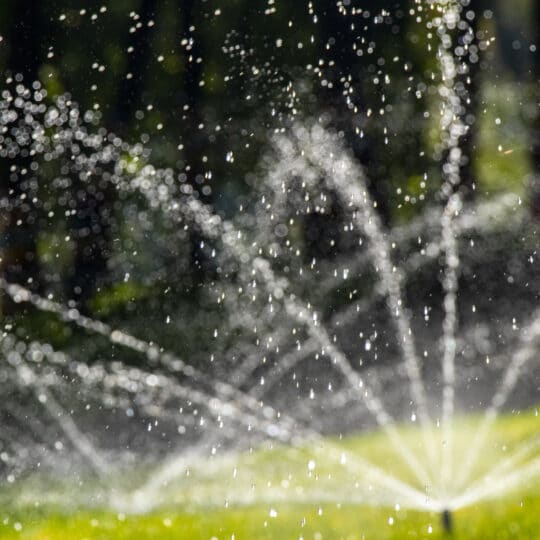Top 3 Practices for Properly Watering Your Lawn
Make the Most of Every Drop
Posted
August 22, 2024

Lawn looking a little parched? It’s no surprise after a hot, dry summer. If you’re thinking about reviving it, there are certain practices that help make the most of your time and utility usage. Here are some tips for properly watering your lawn.
Top 3 Practices for Properly Watering Your Lawn
Water is not only an essential resource, but it’s a precious commodity that’s not always readily available. Utility bills can start to skyrocket if you’re watering your lawn on a regular basis. It may also be regulated during certain drought periods depending on where you live. So it’s important to make the most of every drop. Here are three ways to achieve that while watering your lawn:
- Use a sprinkler.
- Water in the morning.
- Water deeply and less frequently.
Keeping these three points in mind go a long way in watering your lawn properly.
Watering Tools
Like most tasks, the tools you use can make or break a process. Sure, you can use a watering can or hose to water your lawn. But these tools are not as efficient as a sprinkler.
- Sprinklers are the best at mimicking rain.
- They evenly distribute water while saving you the time of having to stand there holding the hose.
- Certain designs have adjustable patterns for different sized lawns and gardens.
Setting up a sprinkler may make it easier and more efficient to water, but when you turn it on also counts.
Best Time to Water Your Lawn
When you water makes a lot of difference.
- Watering in the morning gives the moisture enough time to reach the roots before being evaporated in the heat of the day.
- It also has a chance to dry before nightfall when too much moisture can invite disease.
- Wet foliage is more likely to scald under the hot sun.
Using the right tools at the right time helps, but you still don’t want to use a lot of water.
How Much Water to Use
Just as your lawn can lack water, it can also become oversaturated.
- Ideally, your grass needs an inch or two of water per week.
- This is usually achieved in about 30 minutes.
- This includes any rainfall, which can be measured with a rain gauge.
- Test your soil moisture by making a small hole about six inches deep. If it’s dry, it needs water.
Measurements vary depending on the type of soil and grass you have.
- Dense clay soil retains more moisture.
- Sandy soil has better drainage but requires more water.
- Cool-season grasses require more water until they go dormant in high temperatures.
- Warm-season grasses are more drought-resistant.
- If your lawn has been dormant for more than six weeks, it may need more water to bounce back.
Water for a longer time twice a week instead of a short time every day. Not only does this mean less work for you, but it allows the water to reach the roots—promoting deeper root growth.
Additional Watering Tips
Now that you know the top three tips to ensure you’re getting the most out of every drop of water, here are a few other factors to help make the watering process even easier.
- Consider collecting rainwater to use as part of an irrigation system for your grass and plants. Have your downspout empty into a barrel and recycle this water into your sprinkler system or garden.
- Aerate to reduce soil compaction, improve drainage, and put water on a fast track to the roots.
- Water a reseeded lawn more often until it germinates and becomes established.
- Step firmly on the grass. If the blades spring back, it’s good. If they stay flat, it’s thirsty.
With these tips and proper practices in mind, you can make the most of your watering sessions—benefitting both your yard and your budget.
Special Offer for New Customers
Two Free Lawn Care Treatments
Hurry! Offer Expires April 30, 2025